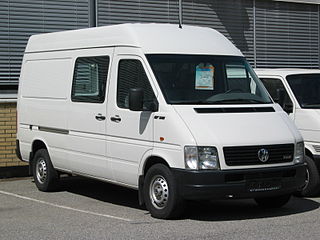SDI vs other VW Group diesel engines
The following table contains a selection of current and historical Volkswagen Group compression-ignition SDI diesel engines for comparison of performance and operating characteristics with other naturally aspirated and forced induction engines of the same capacity:
| | This section needs expansionwith: MEP, max operating revs, dates. You can help by adding to it. (August 2009) |
| engine model | engine displacement | engine configuration & diesel fuel system | valvetrain | max. power: kW (PS) | rpm for max. power | max. torque: Nm (ft·lbf] | rpm for max. torque | specific power: kW/L (PS/L) | max MEP: bar | MEP @ max. power: bar | max operating revs: rpm | dates installed |
|---|---|---|---|---|---|---|---|---|---|---|---|---|
| 1.4 SD | 1,391 cc (84.9 cu in) | inline 4, indirect injection mechanical distributor injection pump | 8v SOHC | 35 (48) | 4,500 | 82 (60) | 2,700 – 3,500 | 25.2 (34.5) | 5,000 | Polo 2, 2F late 1980s - early 1990s | ||
| 1.4 TDI | 1,422 cc (86.8 cu in) | inline 3, turbo direct injection mechanically pressurised, electrically triggered pumpe-duse unit injectors | 12v SOHC | 59 (80) | 4,000 | 195 (144) | 2,200 | 41.5 (56.3) | Polo Bluemotion, first generation 2006 - 2010 | |||
| 1.7 D | 1,716 cc (104.7 cu in) | inline 4, indirect injection mechanical distributor injection pump | 8v SOHC | 42 (57) | 4,500 | 103 (76) | 2,800 | 24.5 (33.2) | 10/1986- 05/1992 | |||
| 1.7 SDI | 1,716 cc (104.7 cu in) | inline 4, direct injection electronic distributor injection pump | 8v SOHC | 44 (60) | 4,200 | 115 (85) | 2,200 | 25.6 (35.0) | 07/1996- 07/2005 | |||
| 1.9 D | 1,896 cc (115.7 cu in) | inline 4, indirect injection mechanical distributor injection pump | 8v SOHC | 47 (64) | 4,300 | 124 (91) | 2,500- 3,200 | 24.8 (33.8) | ||||
| 1.9 SD | 1,896 cc (115.7 cu in) | inline 4, indirect injection electronic distributor injection pump | 8v SOHC | 36 (49) | 3,000 | 121 (89) | 1,800 | 19.0 (25.8) | current (Industrial) | |||
| 1.9 SDI | 1,896 cc (115.7 cu in) | inline 4, direct injection electronic distributor injection pump | 8v SOHC | 50 (68) | 4,000 | 133 (98) | 1,800 | 26.4 (35.9) | current | |||
| 1.9 TD | 1,896 cc (115.7 cu in) | inline 4, indirect injection mechanical distributor injection pump | 8v SOHC | 55 (75) | 4,200 | 150 (111) | 2,000 | 29.0 (39.6) | ||||
| 1.9 TDI | 1,896 cc (115.7 cu in) | inline 4, direct injection electronic distributor injection pump | 8v SOHC | 66 (90) | 3,750 | 210 (155) | 1,900 | 34.8 (47.5) | ||||
| 1.9 TDI PD | 1,896 cc (115.7 cu in) | inline 4, direct injection Pumpe Düse (PD) Unit Injector | 8v SOHC | 96 (131) | 4,000 | 310 (229) | 1,900 | 50.6 (69.1) | current | |||
| 2.0 SDI PD | 1,968 cc (120.1 cu in) | inline 4, direct injection Pumpe Düse (PD) Unit Injector | 8v SOHC | 55 (75) | 4,200 | 140 (103) | 2,400 | 27.9 (38.1) | current | |||
| 2.0 TDI PD 140 PS | 1,968 cc (120.1 cu in) | inline 4, direct injection Pumpe Düse (PD) Unit Injector | 8v SOHC | 103 (140) | 4,000 | 320 (236) | 1,800 | 52.3 (71.1) | 20.43 | 15.70 | current | |
| 2.0 TDI PD 16v 170 PS | 1,968 cc (120.1 cu in) | inline 4, direct injection Pumpe Düse (PD) Unit Injector | 16v DOHC | 125 (170) | 4,200 | 350 (258) | 1,800- 2,500 | 63.5 (86.4) | current | |||
| 2.0 TDI CR 16v 170 PS | 1,968 cc (120.1 cu in) | inline 4, direct injection common rail (CR) | 16v DOHC | 125 (170) | 4,200 | 350 (258) | 1,750- 2,500 | 63.5 (86.4) | current | |||
| 2.5 R5 SDI 75 PS | 2,461 cc (150.2 cu in) | inline 5, direct injection electronic distributor injection pump | 10v SOHC | 55 (75) | 3,600 | 155 (114) | 2,250 | 22.3 (30.5) | 02/2002- current | |||
| 2.5 R5 TDI CR 163 PS | 2,461 cc (150.2 cu in) | inline 5, direct injection common rail (CR) | 10v SOHC | 120 (163) | 3,500 | 350 (258) | 2,000 | 48.8 (66.3) | current | |||
| 2.5 R5 TDI PD 174 PS | 2,461 cc (150.2 cu in) | inline 5, direct injection Pumpe Düse (PD) Unit Injector | 10v SOHC | 128 (174) | 3,500 | 400 (295) | 2,000 | 52.0 (70.7) | 20.43 | 17.84 | current | |
| engine model | engine displacement | engine configuration & diesel fuel system | valvetrain | max. power: kW (PS) | rpm for max. power | max. torque: Nm (ft·lbf) | rpm for max. torque | specific power: kW/L (PS/L) | max MEP: bar | MEP @ max. power: bar | max operating rpm | dates installed |














